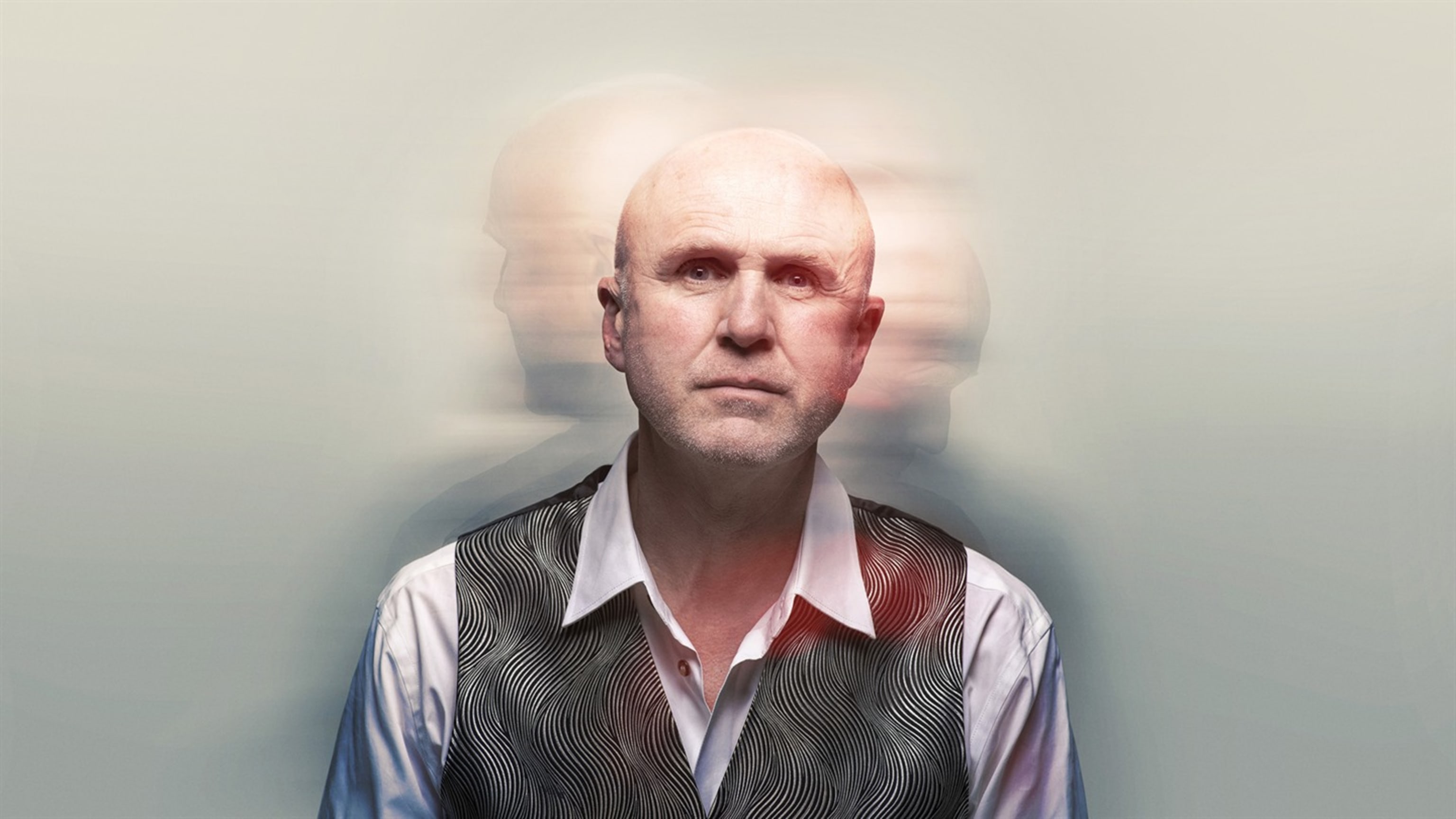
The power
of thought
Tim Crouch is often depicted as a magician of the theatre. He encourages his audience to let go of all expectations and just show up.
The British playwright and actor Tim Crouch is world-renowned for his thought-provoking approach to theatre. His works often blur the lines between reality and fiction, challenge conventional story-telling techniques, and invite the audience to engage with complex themes and ideas in a straightforward form. To the Bergen International Festival, he brings with him the performances An Oak Tree and Truth’s a Dog Must to Kennel.
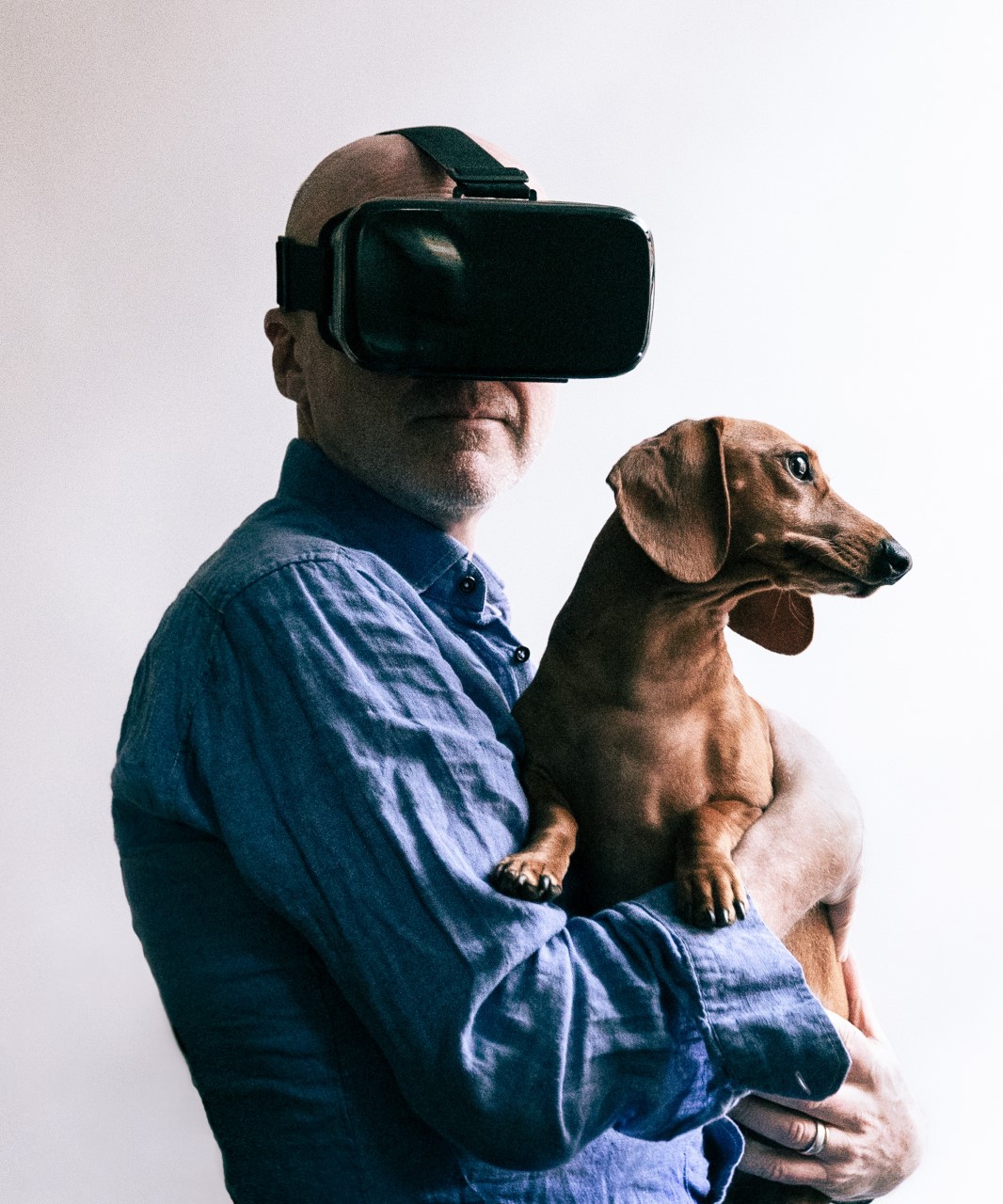 Truth's a Dog Must to Kennel. Photo: Amy Gibson
Truth's a Dog Must to Kennel. Photo: Amy Gibson
'I think my plays will wrong-foot you but in the most gentle of ways. They will playfully throw you off balance. They operate on a slightly different set of rules to more mainstream theatre – but they are still plays. They are still acts of story-telling. If you are open, you will get them. If you are closed, go watch a film,' says Tim Crouch.
The theatre-maker actively employs autosuggestion as a tool in his work. In short, autosuggestion is a form of self-hypnosis. One encyclopedia describes it as "a process that involves convincing oneself that one feels, desires, experiences, and senses things lacking clear grounding in reality."
Watch Tim Crouchs TED-talk «The Art of the Autosuggestion»:
He uses autosuggestion to strip the stage and actors of as much set design and costumes as possible. "Theatre in its purest form is a conceptual art. It doesn't need sets, costumes, or props, but can exist in the minds of the audience," he has stated.
'If I use a Hamlet analogy, we don’t need the actor to speak Danish or wear a crown to understand they’re a Danish prince. We allow the audience to generate their own version but in relation to what’s presented. If we present the obvious, then there’s no work for the audience to do,' says Crouch.
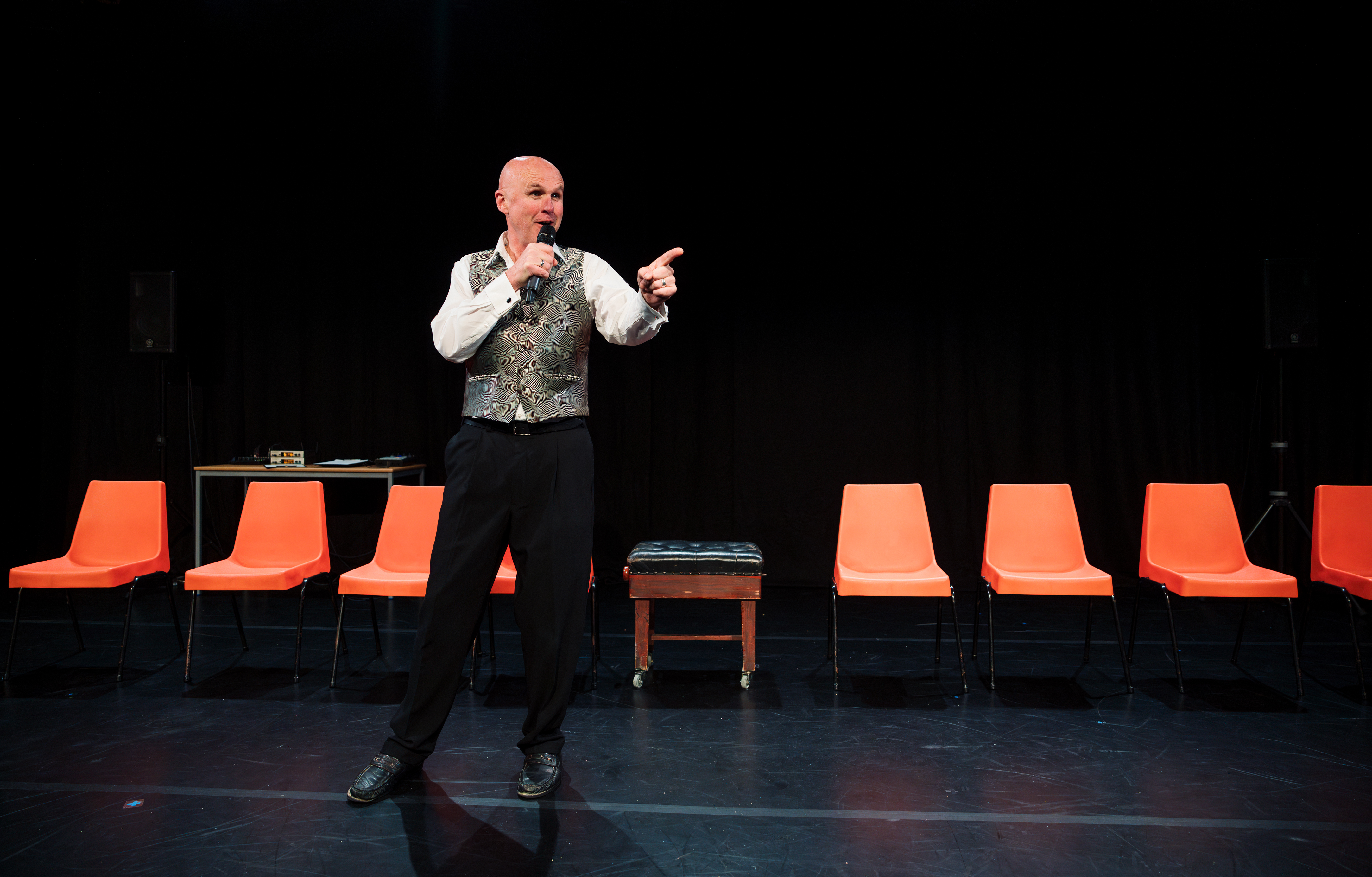 An Oak Tree. Photo: Alex Brenner
An Oak Tree. Photo: Alex Brenner
Photographs of Tim Crouch's performances often show a very simple stage. The magic happens in the response he creates in his audience.
A one-armed beginning
'Much of my early playwriting influence came from contemporary visual and conceptual art,' says the British director and playwright.
Crouch began his career as an actor, but gradually became frustrated by how often he found himself in rehearsal rooms where no thought was being given to the audience.
' I spent too much of my time as an actor complaining. And so I started to do something about it. I began a PhD but couldn’t understand Performance Theory. So then I started to write.'
In 2003 the actor began writing his first play. The words flowed out of him, and after only five days My Arm was completed.
My Arm is the story of a boy who raises his hand and holds it there for the next 30 years. In the process, the boy is hailed as a medical marvel and an icon of New York's art scene. In the introduction to the play, Crouch wrote: "The boy's action becomes more meaningful to others than to himself. His arm becomes the ultimate lifeless object onto which others project their own values and meanings."
In the performance, the audience let Crouch use their personal belongings as characters in the play. When their jewellery, phones or keys are used to tell the story, the audience is free to project their own opinions and interpretations into the play – exactly as with the boy's arm. .
It was simple, but powerful, and Crouch's first play was a hit. Later, he would call My Arm the mother of all his works.
An oak tree
His next play, which will be shown at the Festival, would get its name from the world of contemporary arts.
'In My Arm, I ask the audience to donate everyday objects which I nominate as the characters in the play. It’s not puppetry. A phone becomes my father in the story, for example, or some keys become my mother. And so on. These acts of transformation from object to character are playful and effortless – and they’re done by the audience. After I’d written My Arm, I visited Tate Modern and encountered Craig-Martin’s An Oak Tree (1973). It felt as though it was made just for me!'
Michael Craig-Martin talks about An Oak Tree and other works:
The artwork by Michael Craig-Martin depicts a transparent glass of water placed on a shelf. On a plaque beside the shelf, it states that the glass has been transformed into an oak tree: "The actual oak tree is physically present, but in the form of a glass of water."
When Crouch published My Arm, he made a statement in the text that his next play would be called An Oak Tree in response to the art work. He did not know what story it would tell or how he would tell it, but knew that tit would have this act of transformation at its heart. .
'"My mother is physically present but in the form of these keys." It’s a brilliant and audacious piece and, importantly, it is playful. It reminds us that for art to exist there must be the idea of one thing inside something else. The idea of an oak tree inside a glass. The idea of a character within an actor. An emotion inside a chord. And so on. It feels like a contradiction but a contradiction we resolve innately and effortlessly as humans, says Crouch.
Years later, artist Michael Craig-Martin saw An Oak Tree at Tate Modern.
'A full circle,' remarked Crouch.
373 performances with 373 actors
Crouch's play An Oak Tree turns the rules of theatre upside down by hiring an actor who hasn't seen or read the play beforehand. Tim Crouch must guide the actor and the audience through the story. It's best not to know anything about the content of the story in advance.
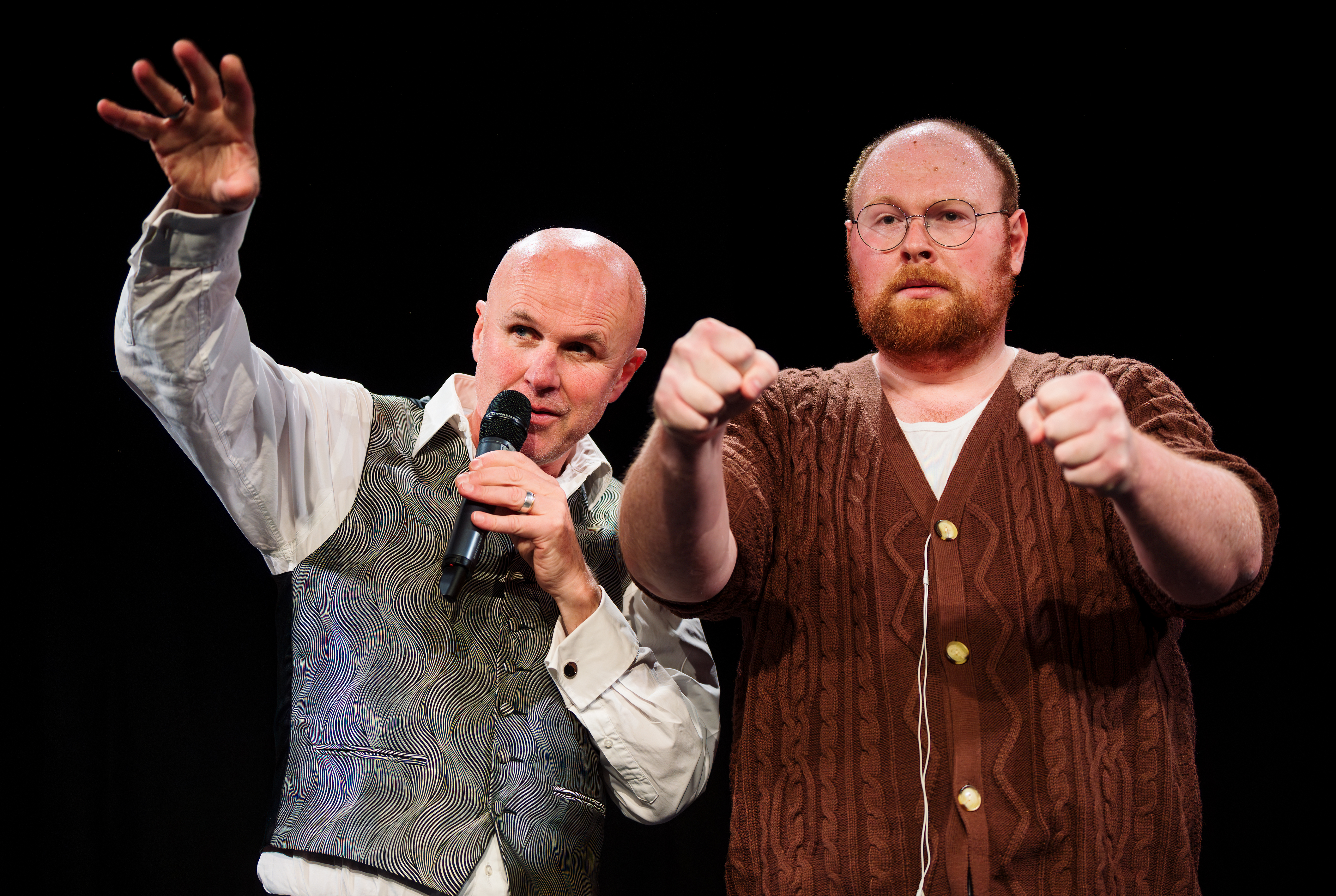 An Oak Tree. Photo: Alex Brenner
An Oak Tree. Photo: Alex Brenner
'Each performance of An Oak Tree starts again from the beginning. It’s like a lizard who loses its tail and grows a new one each time. It’s never felt old to me. I’ve never been bored. I can’t repeat patterns because half the cast is new each time,' says Crouch.
When Tim Crouch arrives in Bergen he will have performed An Oak Tree 373 times with 373 different actors, over more than 15 years. Among them are Frances McDormand, F. Murray Abraham, Sophie Okonedo, Laurie Anderson, Geoffrey Rush and Peter Dinklage.
'I feel so privileged to have had this show in my life for nearly twenty years. I am a better actor because of it. Each performance is a new adventure – an adventure for me, the second actor and the audience,' says Crouch.
But who will be onstage with him in Bergen?
'I don’t choose the actors. I’ll have a conversation with the person who has programmed the show – Festival director Lars Petter Hagen in the case of Bergen. We’ll talk about qualities that are effective in An Oak Tree – an emotional availability, a playfulness, an openness,' says Crouch.
The prospective actors receive one page of information and conditions before the play. If they accept these conditions, Tim Crouch meets with them an hour before the play begins, without knowing very much about them.
'I’m sure the two actors will be brilliant. I just don’t know who they are yet. It’s fascinating for me how An Oak Tree plays with an audience’s expectations. The guest actor is their representative. They discover the play at the same time as the audience.'
Art is never perfect
The Guardian described the play as 70 emotional minutes exploring how we perceive and interpret the world, and how we cope with grief and absence. Even with a new actor on stage each time, the performance seems to strike a chord.
'Every word spoken in An Oak Tree is scripted, but that doesn’t stop endless permutations in tone, register, energy, emotion, movement. Some actors in the history of the show have ripped up the stage; some have glided through the play; some have cried their way through; some have laughed their way through. No response is wrong. Every instinct is supported. It’s always amazing to watch an actor step forward with no idea where they’re going! My job is to make sure that they can do this safely and successfully!', says Crouch.
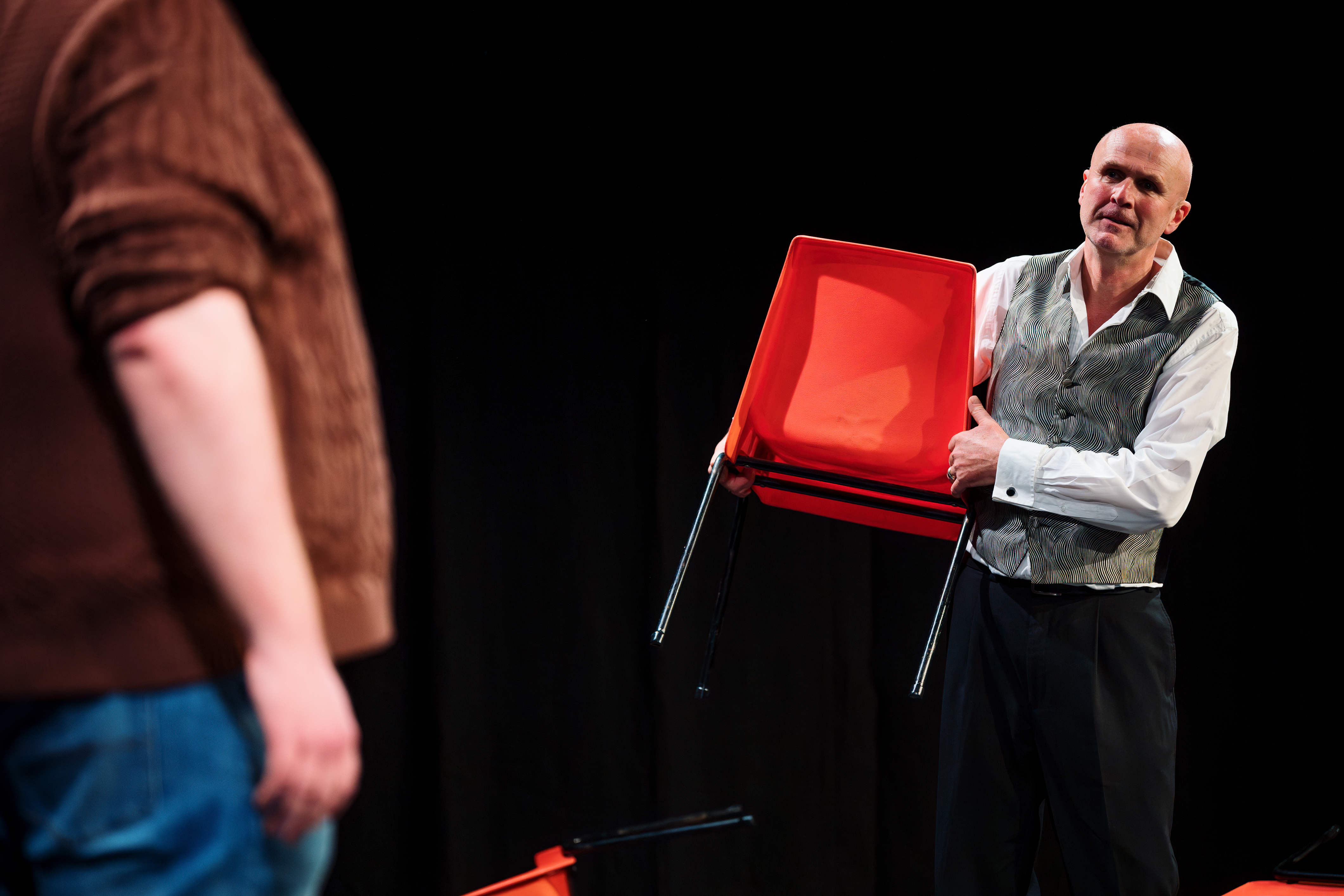 An Oak Tree. Photo: Alex Brenner
An Oak Tree. Photo: Alex Brenner
'The show is never ‘perfect’, art is never perfect. I’ve never heard the lines spoken in a way I might have imagined them spoken when I wrote them – because the second actor is discovering them live. And this liveness is what makes theatre; it is more interesting than getting it right.'
Then came the pandemic
Truth’s a Dog Must to Kennel is a recent work that looks back on and reflects on the pandemic years. Crouch began writing the play in 2021, and when he saw some images of a VR headset glasses, the writing quickly took off.
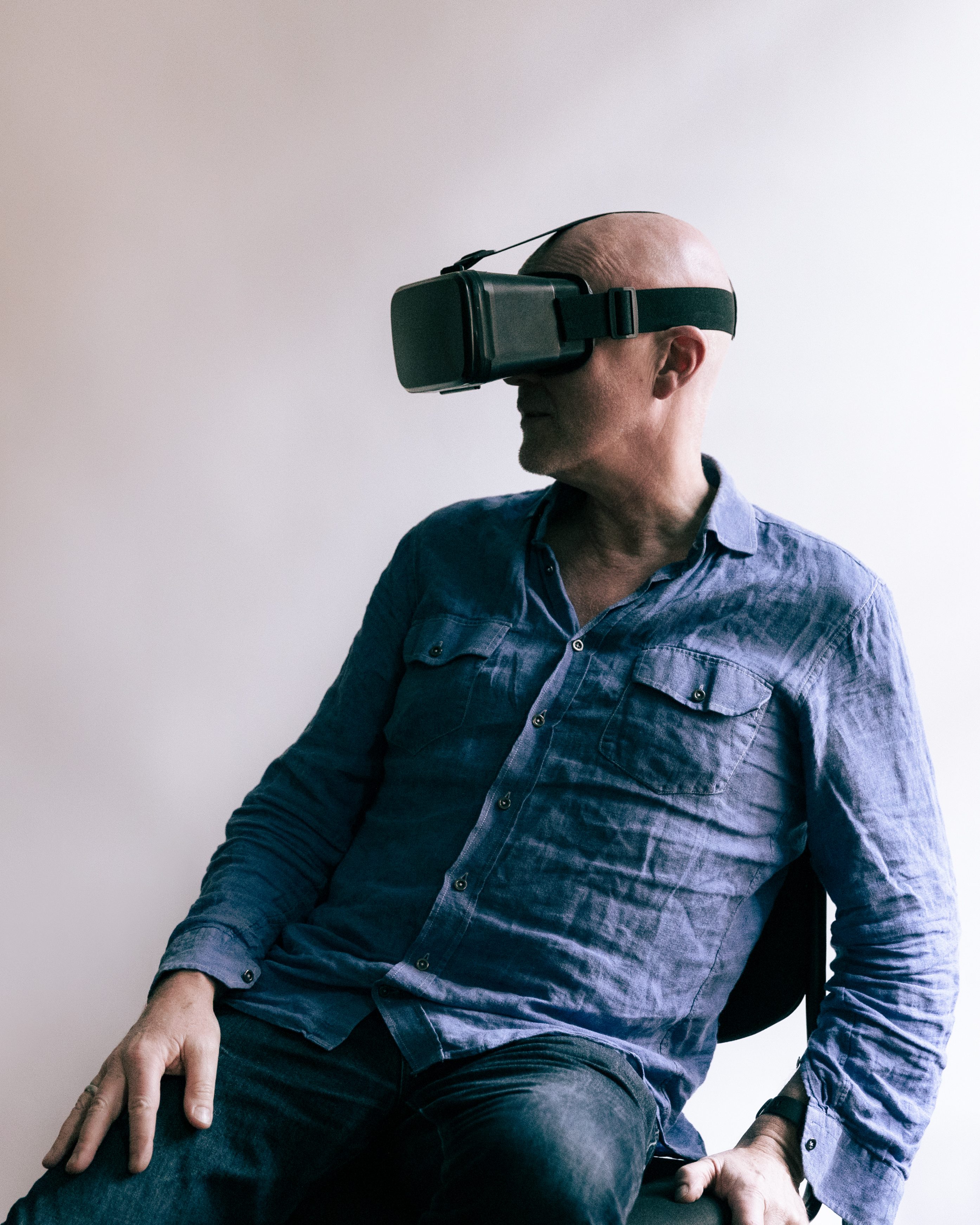 Truth's a Dog Must to Kennel. Photo: Amy Gibson
Truth's a Dog Must to Kennel. Photo: Amy Gibson
The play begins with Crouch wearing a VR headset and describing scenes from a production of King Lear. The 17th-century Shakespearean tragedy is action-packed: An old king divides his kingdom among his two oldest daughters, who flatter him, while the youngest and most honest is cursed and banished. The ingratitude and coldness of the older daughters drive him to madness; the youngest daughter saves him but is killed after a military defeat, and the king follows her in death.
But in Crouch's play, the Fool leaves King Lear's side before the blinding and the killing – and before the intermission in Shakespeare's play. The Fool says: "Truth’s a dog must to kennel; he must be whipped out, when Lady the brach may stand by the fire and stink."
 Truth's a Dog Must to Kennel. Photo: Stuart Arrmitt
Truth's a Dog Must to Kennel. Photo: Stuart Arrmitt
'I wear the VR headset for less than half the show. It’s a device with which I engage the audience’s imagination. I use it to place the Fool back into the play they’ve left. With the headset I ‘see’ another audience in another theatre. Something catastrophic happens in that audience which parallels the catastrophies of King Lear,' says Crouch.
Tim Crouch on Truth's a Dog Must to Kennel:
But why King Lear?
'It is the apogee of a wealthy Western theatre. If I want to use a paradigm, then Lear is a good one. Also, the world in that play has obvious parallels to the world we’re in now – the corrupt leadership, the violence, civil division, war. The dismissal of the poor. I started to write Truth’s a Dog before Trump created his Truth Social platform of lies. Every day, the world is getting closer and closer to Act Five of King Lear…,' says Crouch.
Live theatre
From the pandemic years, Crouch remembers most vividly the countless screens, conversations through squares on top of a desk, and the death in those transactions, as he puts it himself.
'I am now super sensitive to the sight of real humans gathering in real life! My heart soars when I see it,' sier Crouch.
A reporter from The Guardian wrote that Truth's a Dog Must to Kennel mourns the art form of theatre, whilst showcasing theatre’s unique possibilities to reinvent itself.
Crouch er på alle måter glad for at pandemien er over og at teateret igjen kan oppleves i sin fysiske form, og ikke gjennom strømming og skjermer.
'I would love to be able to write optimistically about the effect of the pandemic on theatre. I would love to think that we felt the loss of live encounter and were now working to re-assert that quality. But sadly, I don’t think this is happening. I speak for the UK, not Norway, but since post-pandemic became the new normal I have seen little to give me hope. There is a huge confusion about digital ‘theatre’. The idea of ‘live-streaming; being in any way actually live. In live theatre, we are collective witness – both to the act and our communal perception of the act. With digital and VR, the lessons learnt are unaccompanied – like they were when our computer screens became our stages during lockdown. There was a community of sorts in that new state – all of us sitting singly at our desks, our kitchen tables, watching the world through screens. This, we were told, was live digital theatre, a form that overcame the limitations of real time and space. With lockdown this was all we could do, but the digital emanation continues to hold as we plot our way back to a new normal. I’m all for technological and digital progress but don’t call it theatre. Find a new name. Live theatre is a tautology. Theatre is only live, says Crouch.
His appeal is straight-forward:
'Go to the theatre, people. The small theatres. The community theatres. The brave theatres. The intimate theatres. Theatre that need you, not your money. Let theatre that is being made for profit die. And let new shoots grow.'
Back to Bergen
Tim Crouch has visited Norway on several occasions, and remembers swimming in the Oslo fjord and collecting mussels for dinner. His collaborator and co-director Andy Smith is married to the Norwegian cellist Maja Bugge, and her grandfather was Hans Jacob-Nilsen, a former director of the theatre Den Nationale Scene.
When Andy Smith opened a performance at BIT Teatergarasjen in 2015, Crouch flew to Bergen to surprise him.
'There was snow on the ground and we took a cable car up a hill. It was magical. I’m really looking forward to being back.'
An Oak Tree is performed 24 and 25 May, and Truth’s a Dog Must to Kennel 26 and 27 May – both at Teaterkjelleren at Den Nationale Scene.



